Minimalist designs are all the rage. Though they are simple by nature, they walk a fine line between stylish and soulless. Minimalism is an unspoken beauty that oozes out of the blank spaces of a room. It takes an artist to find that optimal balance.
Whilst enhancing minimalism may sound like an oxymoron, it is possible. Think of it as adding highlights to a hairstyle rather than dyeing it with bright colours. Here are eight ways to master that line between stylish and soulless when elevating a minimalist living room.
1. Embrace blank space
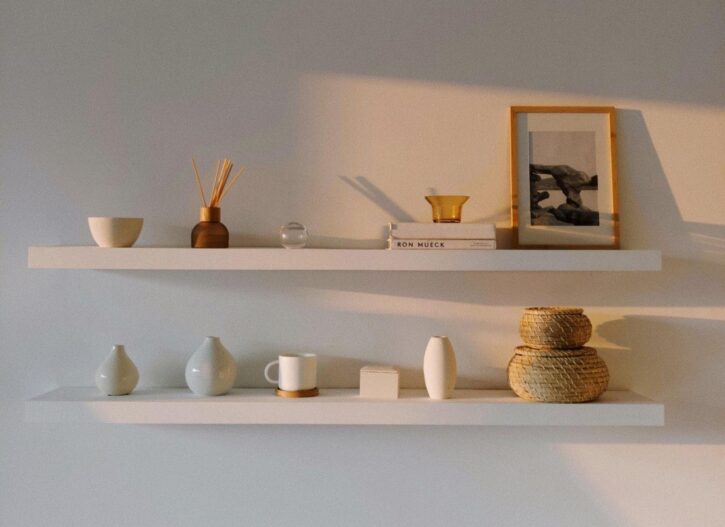
Blank space can say just as much about a room as the occupied space. It fills the room with subtle nuances. Knowing this, ensure to give your homespace room to breathe. Remember the power in what is left unspoken.
If items are musical notes, then the blank spaces are the rests. It’s all about the composition.
For example, when arranging furniture, don’t default to placing couches against the wall. Place furniture in such a way that they are interconnected. Ideally, you’ll create a space free of blockages that stifle the movement. It’s almost like channelling the room’s energy into a tranquil stream.
2. Transcend to tranquillity
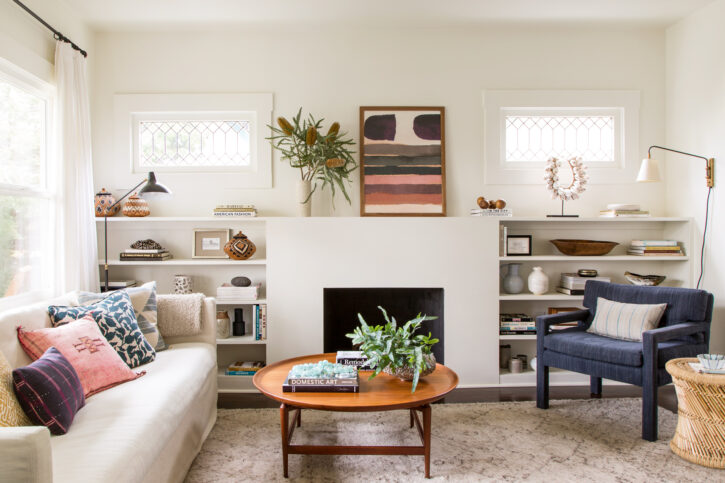
Besides building a tranquil stream of nuance, there are other ways to encourage tranquillity in your living room. Make your space inviting by providing plenty of seating options. This does not mean dragging kitchen seating into the living room. It means making your lounge suites all the more enticing by adorning them with cushions and throw rugs.
…or placing them next to a bookshelf. That also works.
You want your space to say, ‘welcome. Make yourself at home. Collapse in this marshmallow-soft cloud and read a book.’ Some seating is more ‘collapsable’ than others. Perhaps invest in some beanbags. (These are not the most ergonomic option but they can make great accent pieces.)
3. Clear the clutter
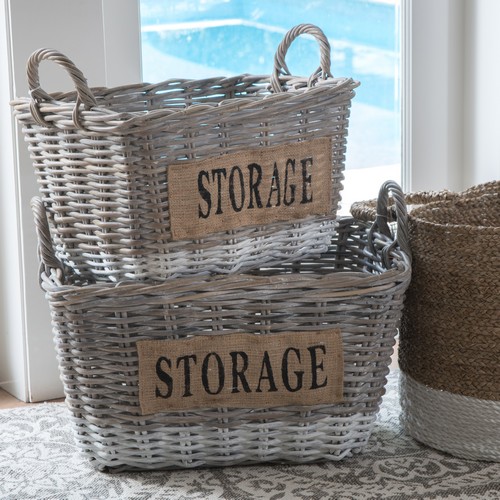
Environmental clutter—which translates to mental clutter—is the enemy of minimalism. We need to clear space to allow for free-flowing movement, both physically and mentally.
Unless you’ve conducted a Marie Kondo level of cleaning, you will likely have excess piles of possessions. This is human nature. It’s the way that we organise these piles that makes or breaks the minimalist style.
Wicker is a texture frequently used in minimalism.
Make your available storage spaces work for you. Use bookcases and display cabinets to showcase your personality with knick-knacks or framed photos. Arrange your favourite books in order, surrounding them with bookends to match the room. Create a display for your centrepiece coffee table. This can consist of your favourite books, a floral arrangement, or both. Make sure your centrepiece display matches your colour scheme. There are many ways you can decorate your coffee table in a minimalist style.
4. Don’t overdo the knick-knacks
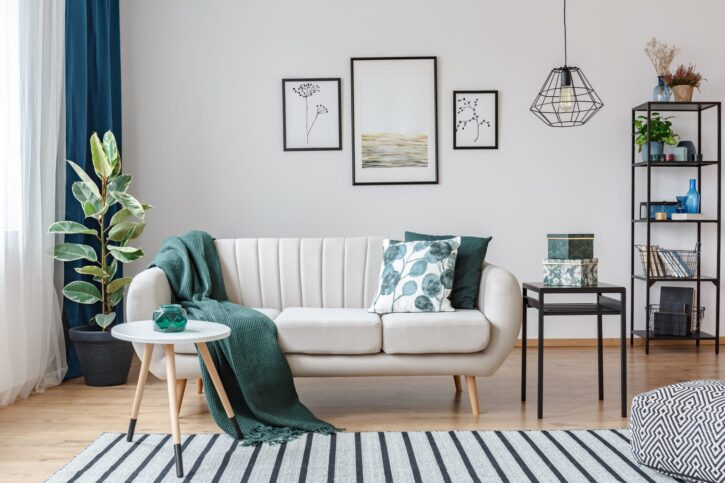
Although decor can beautify and offset a room, don’t overdo it. Remember the key to minimalism is that less is more. Be selective and think of them more as accent pieces rather than as something to fill the space (remember—we’re going for highlights over a full dyejob).
If you’re going to invest in an extra accessory, make it a scented candle. Smell has a strong influence over our perception. If we inhale the scents of a day spa—or of lavender, the most relaxing fragrance of all—we’re going to feel more relaxed.
5. Stick to neutral tones
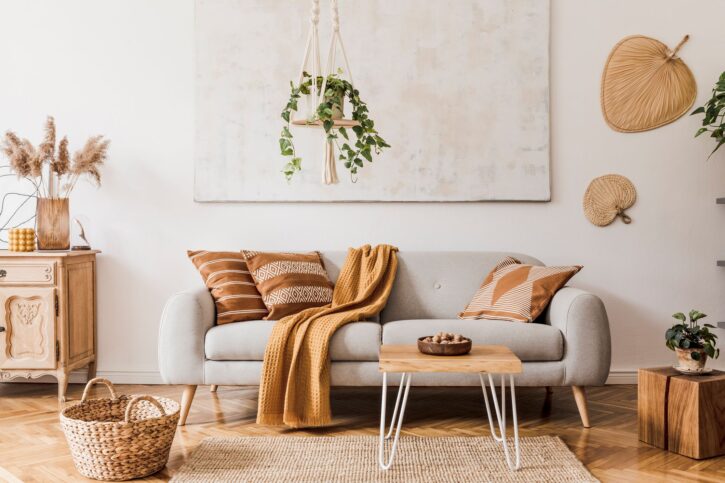
Another mark of minimalism is tonal neutrality. This isn’t to say that everything should be a brilliant bridal white. Have you ever required dental crowns or veneers? Were you tempted to select porcelain, or the whitest material available? With minimalism, it’s the opposite. We embrace off-white and colours of light caffeine staining here.
It’s the colour of coffee-stained teeth, and yet it’s somehow so inviting.
White may be a neutral tone, but it’s not muted. Whether it’s in interior design or in life, things are rarely black and white. Minimalism speaks to subtle nuance and this is why hushed tones trending towards—but not quite at the end of—varying colour gradients are best here.
6. Use accent pieces
Herein lies an interior design secret: finding the right accent pieces to offset an entire room. The point of accent pieces is that they are used sparingly. It’s amazing how such small additions can change an entire room’s ambience.
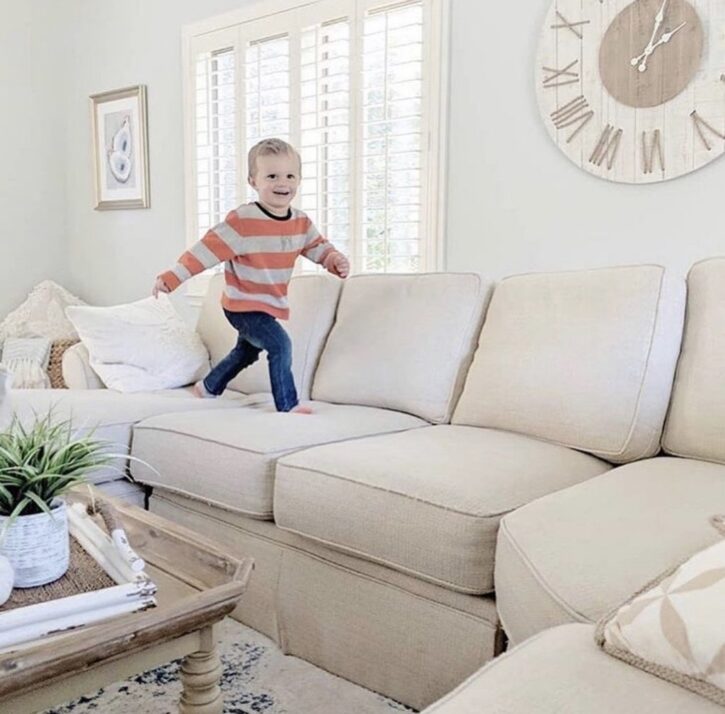
Where do your eyes go here? The clock. The clock is the accent piece—and boy, does it offset and complement the room at the same ‘time’.
Wherever you place your accent pieces is where attention will be drawn. If you use wall art, eyes will draw towards the wall. If you use textured or coloured vases, eyes will draw towards corresponding tabletops. If you use bright decor, eyes will dart to wherever you have these set up. Think about your colour scheme and try not to distract from the minimalist neutral tone. Consider style and texture.
7. Think in terms of textures rather than patterns
Textures are like subtle patterns—and subtlety is at the heart of minimalism. The texture is to lounge spaces as layers are to outfits; they are an understated way to make an impression.
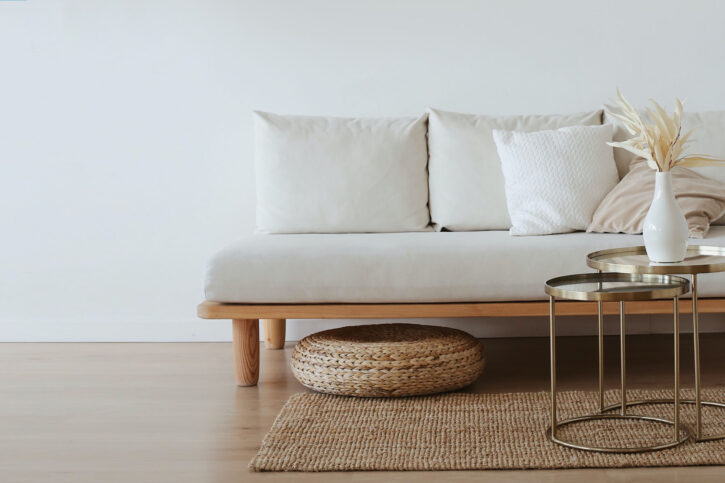
Textured rug: check. Textured footstool: check. If you look closely, you can even see the texture on that white cushion. Bonus points for the glass coffee table.
Imagine, for instance, linen cushions against your favourite lounge suite—whether they’re matching the muted tones or standing out as accent pieces. This adds a rugged layer of tactility to your living room. Imagine a glass-topped coffee table. This brings a subtle variation to the room that patterns can’t quite do.
Imagine cushions with tasselled trimmings. Imagine woven blankets and throw rugs. Save pattern and colour for the accent pieces. Shift the focus to texture and see what sticks.
8. Invite natural lighting and fresh air
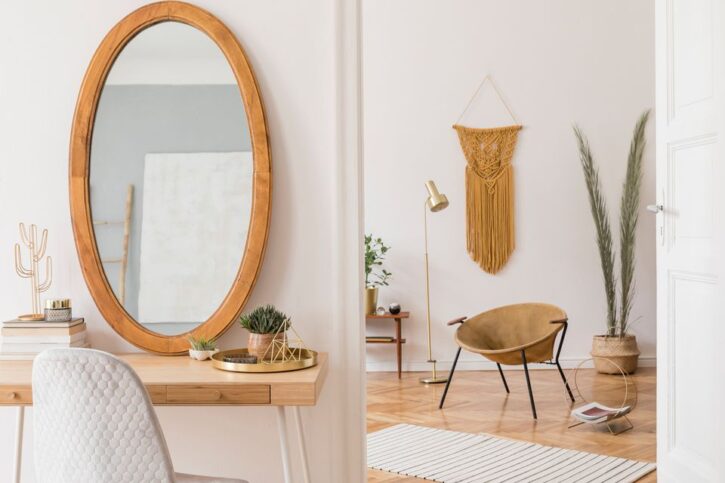
No one wants a musty living room. Open the windows and let in some fresh air! Open the curtains and let the sunshine pour in! Even adding a mirror can bring extra light into a room. A subtle touch of the elements will help make your living room feel even more relaxing. It really takes the smallest of touches to get the most out of minimalist space.